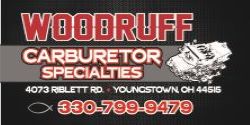a70duster
Well-Known Member
Hello all, last Friday (3/21/25) I went to a dyno shop in Denver for my first time. ALL my tuning has been either at the 1/4 mile track or street-butt-dyno. I have a method down that I thought worked fine. First some background...
Three years ago I resurrected my '70 Duster drag car that sat for 20 years. I made it to Bandimere the last month before they closed in Oct 2023. It was so busy there that I barely got four runs in. I was also dealing with intermittent demons so I never got a chance to deal with tuning. Plus the car was pretty well dialed in 20 years ago.
Summer of 2024 test and tune schedule was Fridays at Pueblo (3 hours away). I switched from $12 110 Sunoco to E85 ($2.25). I added E85 metering plates and bumped up the jet 10 sizes. It seems like the car was fine just running 3 - 4 tenths slower. I was also having a little struggle with the cam and the torque converter. Again I didn't play with timing or jet changes because of mechanical issues.
Over last winter I ironed out all the issues and desided to try a dyno. The shop I went to had an owner that was down to earth, super friendly, let you tune the car while on the dyno and let you operate the car. The 1st run showed how bad my tune was. AFR started at 17:1 and crept into 15:1. The owner stopped my run at 5k RPM and said the car was WAY TOO LEAN.
So after 5 dyno runs of bumping up the jet sizes (and having a header bolt back out and dump a gallon of coolant) I got best power via the carb.
The next two runs were on 100 HP NOS and the final two runs consisted of bumping the timing from 35° to 40° for best power.
After I was done with 90 minutes of dyno time the car picked up at least 40 HP across the board AND tuned out a dangerous lean condition. The NOS runs showed me that the AFR were safe. I got A LOT done. That was the BEST $150 I spent on the car.
Red is my first run, blue is best power NA and green is the best NOS run.

Three years ago I resurrected my '70 Duster drag car that sat for 20 years. I made it to Bandimere the last month before they closed in Oct 2023. It was so busy there that I barely got four runs in. I was also dealing with intermittent demons so I never got a chance to deal with tuning. Plus the car was pretty well dialed in 20 years ago.
Summer of 2024 test and tune schedule was Fridays at Pueblo (3 hours away). I switched from $12 110 Sunoco to E85 ($2.25). I added E85 metering plates and bumped up the jet 10 sizes. It seems like the car was fine just running 3 - 4 tenths slower. I was also having a little struggle with the cam and the torque converter. Again I didn't play with timing or jet changes because of mechanical issues.
Over last winter I ironed out all the issues and desided to try a dyno. The shop I went to had an owner that was down to earth, super friendly, let you tune the car while on the dyno and let you operate the car. The 1st run showed how bad my tune was. AFR started at 17:1 and crept into 15:1. The owner stopped my run at 5k RPM and said the car was WAY TOO LEAN.
So after 5 dyno runs of bumping up the jet sizes (and having a header bolt back out and dump a gallon of coolant) I got best power via the carb.
The next two runs were on 100 HP NOS and the final two runs consisted of bumping the timing from 35° to 40° for best power.
After I was done with 90 minutes of dyno time the car picked up at least 40 HP across the board AND tuned out a dangerous lean condition. The NOS runs showed me that the AFR were safe. I got A LOT done. That was the BEST $150 I spent on the car.
Red is my first run, blue is best power NA and green is the best NOS run.
Last edited:

















